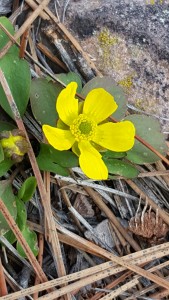 I recently finished reading Rod Stryker’s The Four Desires. In it, he speaks to the concept of vairagya, a Sanskrit term often translated as “dispassion, detachment, or non-attachment.” This idea is very similar to aparigraha, “non-grasping or non-possessiveness” which I wrote about in last month’s blog. Both concepts convey the idea of releasing the tight grasp we often have, and sometimes aren’t even necessarily aware that we have, on something, whether it is a desired outcome, a habit, even emotions that we hold tight to around certain situations or memories.
I recently finished reading Rod Stryker’s The Four Desires. In it, he speaks to the concept of vairagya, a Sanskrit term often translated as “dispassion, detachment, or non-attachment.” This idea is very similar to aparigraha, “non-grasping or non-possessiveness” which I wrote about in last month’s blog. Both concepts convey the idea of releasing the tight grasp we often have, and sometimes aren’t even necessarily aware that we have, on something, whether it is a desired outcome, a habit, even emotions that we hold tight to around certain situations or memories.
As I spoke to last month, we as humans, myself definitely included, often find ourselves getting caught up in desired outcomes. We take actions to move ourselves toward specific goals, and get super focused on the results. And in holding so tight to a desired outcome, we can close ourselves off to other opportunities that are coming our way because we are so single focused that we don’t even see what is there. Often, it is in the softening of our grasping for a certain result, when we act and work from a place of love and passion without being so attached to an outcome, that we find and make space for opportunities to reveal themselves. This teaching is a basis, and one of my favorites, from the Bhagavad Gita: “You have a right to your actions,/but never to your actions’ fruits./Act for the action’s sake./And do not be attached to inaction. Self-possessed, resolute, act/ without any thought of results,/open to success or failure./This equanimity is yoga.” (B.G. 2.47-2.48, translation Stephen Mitchell)
In The Four Desires, teaching about vairagya, Rod Stryker takes this idea even deeper. It is something I know I’ve been taught in some form before, but maybe I hadn’t been ready for the true value of the teaching, because in reading it this past month, it was eye-opening.
Along with external circumstances of validation and outcomes, non-attachment is an incredible practice for internal work. As I mentioned earlier, we can be very attached to emotions and feelings surrounding memories and past situations, even hopes for our future. If, for example, someone hurt us in the past, sadness, pain, and anger would have been very likely and very viable and valid emotions. However, as we move forward in life, the clinging to those particular emotions may no longer be serving us as they once did. In fact, they may be inhibiting us from stepping into a fuller version of our Self. We see and feel them as part of our identity, but in truth, they could very likely be holding us back.
Practicing vairagya can help us to release hurt, fear, doubt, pain, anger and disappointment, those things which hold us in a more limited version of ourselves, and through the release we find more space within ourselves, and in that new space, we can plant the seeds of what will benefit us so much more on our journey and give ourselves an opportunity to grow.
In his book, Stryker gives us a practice to work with this. He offers the suggestion to think of a past event or circumstance that brought fear, hurt, doubt, disappointment, into our life and to feel the emotions that come up with that memory. Then, he asks if we can find any “golden nugget” in that situation. It may be difficult, but he asks us to persist. What lesson was or is still being learned from that situation? How can we use it on our path of growth? When we begin to sense the lessons, things begin to shift. And we open up to new points of view and new perspectives.
It is important to remember, too, that it is a practice. Speaking to this idea, Sally Kempton says, “It is a moment-by-moment, day-by-day process,” in her article Just Let Go. Remembering that it is a process, we remember that non-attachment is not being passive or indifferent, it is an action, a choice of how we act and respond.
The approach of Spring is a time for planting seeds, both literally and metaphorically. It is a time of new beginnings and regeneration. As we practice non-grasping and non-attachment to whatever capacity we can, we begin to open up and find space, we begin to find room to plant the seeds for new ideas. In this letting go, we release what no longer is serving us and give the opportunity for rebirth and the emerging of something new.

In some traditions, serpents are seen as a symbol of Spring. As the ground warms, they are some of the first creatures to begin to emerge. They are, also, largely symbolic of the cycle of life, death, and rebirth. Like the snake’s shedding its skin as a symbol of rebirth and regeneration, we can shed what may be holding us back, no longer serving us, limiting us. A symbolic death, making space for something new, something that will better serve us to grow and move more towards our True Self. The shedding of these concepts of identity takes a tremendous amount of courage, and an equal amount of practice. Yet, as Charles Du Bos said, “The important thing is this: to be able, at any moment, to sacrifice what we are for what we could become.”
